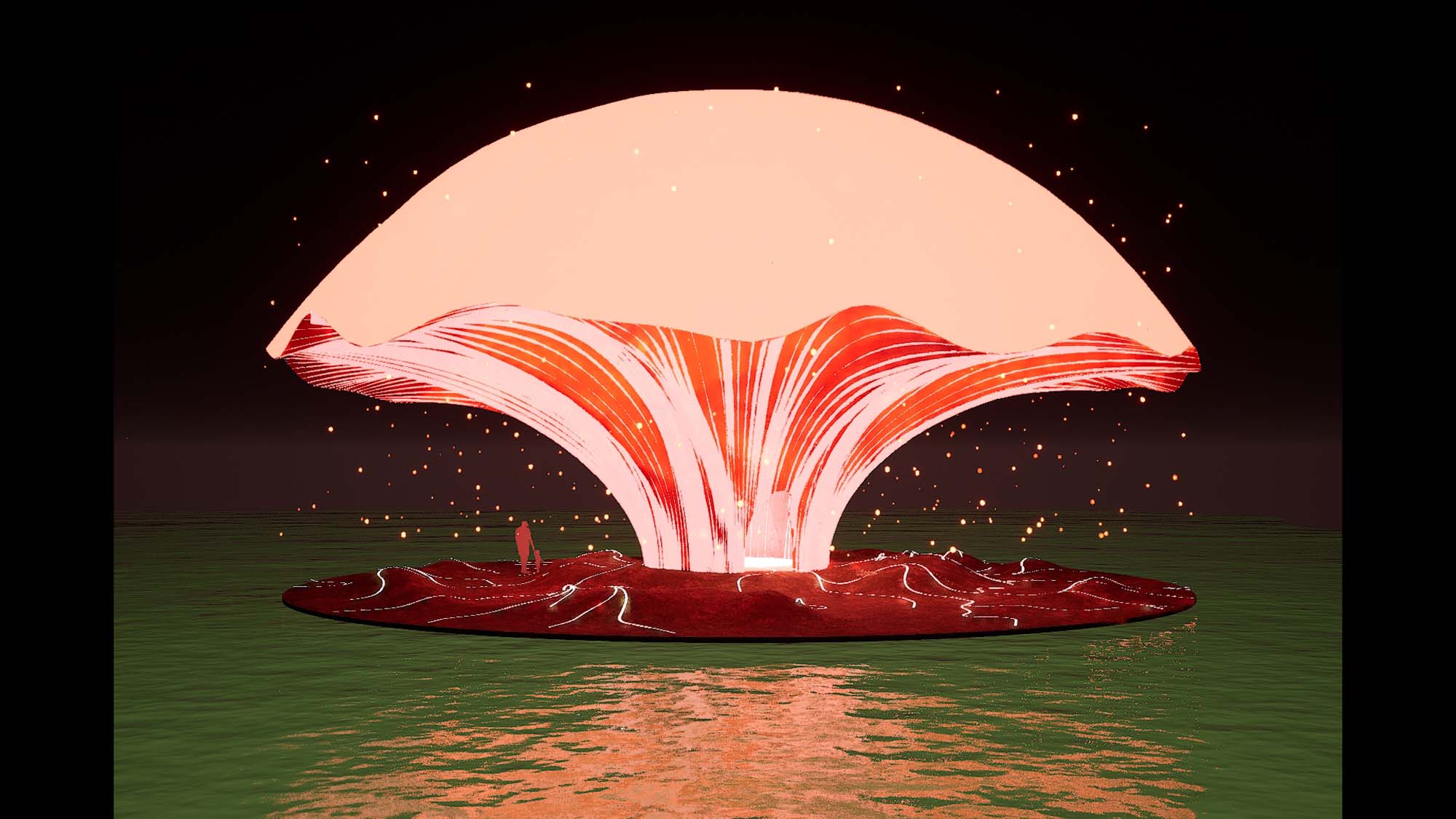
A first of its kind event to take place on the internet, the inaugural Metaverse Architecture Biennale was held September 21–October 6. Hosted by Search Space, Metancy, and W3rlds, the virtual architecture and design fair was an invitation for design firms around the world to leave the limitations of our world behind and familiarize themselves with the possibilities offered through the metaverse. Practices such as Zaha Hadid Architects, Spaces DAO, iheartblob, and PLP Architecture participated, designing futuristic blobby worlds to explore and offering their expertise and knowledge in bridging the gap between physical and digital creative practices.
The fair’s theme, entitled “Presence of the Future,” encouraged architects and designers to create mesmerizing virtual pavilions across two distinct 3D social media platforms: Decentraland and W3rlds. Digital spectators, totaling over 25,000 unique visitors across both virtual worlds, took on new identities through their virtual 3D avatars, maneuvering through the pavilions like an MMORPG. The expansive virtual expo, designed like the classic World’s Fairs of the 20th century, includes a central hub where with just one click, one is shifted to the next pavilion, no walking or waiting necessary.
Bolstered by a series of online public programming, ranging from a virtual dance party with a community-driven MetaDJ to public lectures alongside leading architectural firms touring their virtual pavilions, the Biennale was an opportunity for architect’s to design elegant and functional environments for Web3. Sergey Nadtochiy, co-organizer and curator of the Biennale, stated that one of his major goals for the fair was to “redefine the role of architecture and design in shaping the future of the Metaverse.” The metaverse, an ever-growing and evolving space, is currently seeing a type of virtual “real estate boom,” where investors employing unique cryptocurrencies can purchase digital land and create unique worlds, ranging from stores and public plazas, to even theme parks and private homes.
Public talks during the festival ranged from the role of marketing and business in Web3 for architects, to learning from the emergence and rising popularity of digital-only fashion as a model for future integration with the Metaverse platform. Leading architects, such as Patrick Schumacher of Zaha Hadid Architects, highlighted the lack of constraints in the Metaverse from NIMBYISM. “I believe the Metaverse will meet the needs of isolated events sites but related creative nursery this kind of synergy complexes with networking potentials will lead to these districts, with corporations will want to cluster in these cities,” said Schumacher during his talk, speaking optimistically of the future of the Metaverse.

The idea for the Metaverse Architecture Biennale finds a small precedent in the desire for an online World’s Fair of all sorts. In 1996, the Internet 1996 World Exposition was an attempt at a digital world’s fair, with low resolution graphics of turn of the century pavilions that came before it. Other developments in the past, such as Second Life, employed a user-base hidden economy and marketplace with its own digital currency, became a template for the risks and hopes of the metaverse(s) to come.


